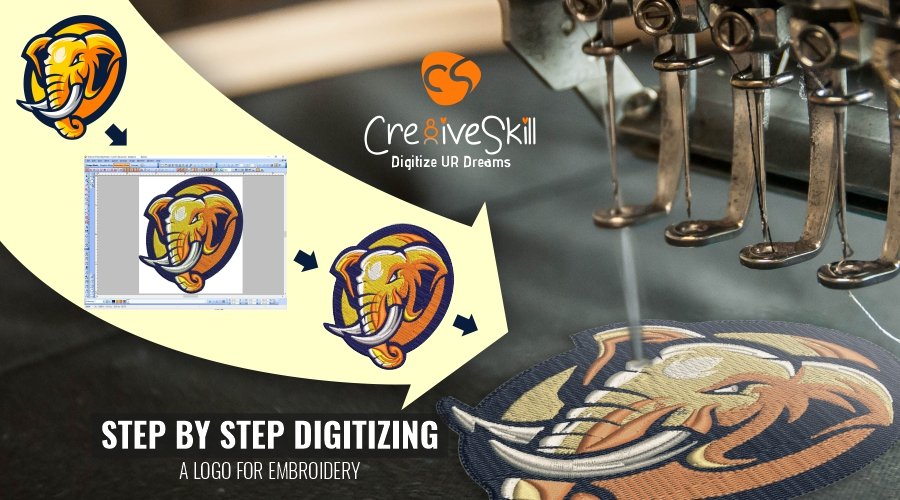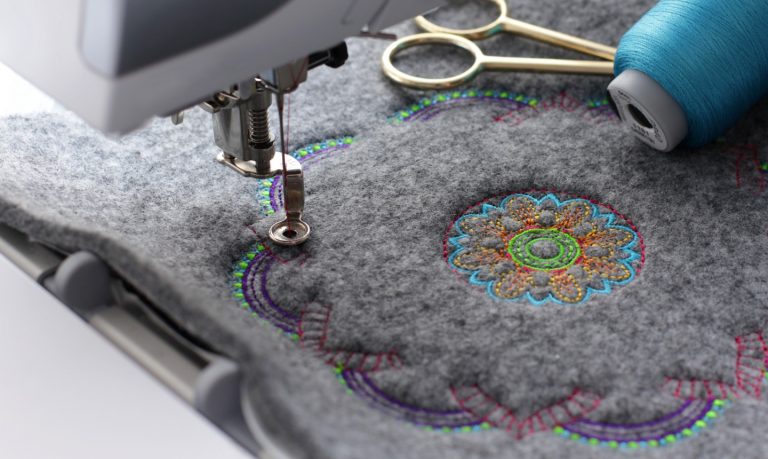Understanding the Embroidery Digitizing Refine: Your Ultimate Guide
Needlework digitizing is a careful craft that calls for accuracy and competence to equate detailed designs into digital formats for machine embroidery. As artisans embark on this journey to grasp the needlework digitizing procedure, a thorough understanding of the essentials establishes the structure for quality.

Understanding Needlework Digitizing Basics
Embroidery digitizing essentials form the foundation whereupon intricate designs are equated right into machine-readable formats for precise stitching. This initial step in the embroidery digitizing process is essential for ensuring that the final embroidered product is a faithful representation of the original layout. Recognizing needlework digitizing essentials includes comprehending crucial ideas such as stitch types, stitch instructions, thickness, rug, and pull payment.
Stitch kinds play an essential duty in establishing the visual and textural end result of the embroidered style. By choosing the ideal stitch kind, whether it be satin, fill, or running stitch, digitizers can attain the wanted impact and improve the overall top quality of the needlework. Additionally, sew instructions influences the circulation and dimension of the design, while thickness establishes the spacing and insurance coverage of the stitches.
Moreover, rug stitching gives security to the design by securing the textile and stopping distortion during the embroidery procedure. Pull compensation is an additional crucial factor to consider to combat the natural tendency of fabric to agreement when stitched. Understanding these needlework digitizing basics is fundamental for developing professional-quality stitched items.
Selecting the Right Digitizing Software
Picking the proper digitizing software is a crucial decision that significantly influences the efficiency and high quality of the needlework digitizing process. Digitizing for Embroidery. When picking the best digitizing software program, it is vital to take into consideration factors such as the complexity of styles you plan to produce, the user-friendliness of the software application, the degree of consumer assistance supplied, and the compatibility with your embroidery machine
There are various digitizing software application choices readily available in the market, ranging from basic programs for beginners to advanced software program for professional digitizers. Some popular choices consist of Wilcom EmbroideryStudio, Hatch Needlework Software Program, and PulseID. These software supply a variety of devices and attributes to aid you develop complex layouts effortlessly.
Before choosing, it is recommended to explore the different software options through totally free trials or demos to determine which one best suits your needs. Additionally, reading reviews and seeking referrals from seasoned digitizers can give beneficial understandings right into the toughness and weak points of each software program plan (Digitizing for Embroidery). By meticulously assessing your requirements and contrasting the functions of various digitizing software, you can make an educated choice that improves your needlework digitizing workflow
Digitizing Devices and Methods

Optimizing Design Setup for Embroidery
Understanding the details of layout setups is basic in attaining ideal results in the needlework digitizing process, building upon the foundation laid by recognizing digitizing tools and techniques. When enhancing design setups for needlework, it is vital to think about variables such as stitch type, thickness, padding, pull payment, and registration. Enrollment settings align different elements of the style properly, maintaining total design integrity.

Troubleshooting Common Digitizing Issues
When experiencing typical digitizing concerns throughout the embroidery process, it is vital to comprehend the root causes and implement reliable services immediately. One typical trouble is stitch density issues, where stitches might be also dense, triggering the textile to pucker, or too sparse, causing voids in the design. Changing the stitch thickness setups in the digitizing software can assist solve this concern.
Another frequent difficulty you could check here is string breaks throughout the needlework process. This can occur because of different factors such as incorrect tension settings, boring needles, or utilizing low-grade string. Ensuring proper maintenance of the embroidery device, consisting of normal needle adjustments and stress adjustments, can reduce the event of string breaks.
Moreover, design registration errors can lead to misaligned components within the needlework layout. Checking the design alignment in the digitizing software application and making necessary adjustments before stitching can help in preventing this problem. By attending to these typical digitizing concerns without delay and properly, you can guarantee a smoother embroidery process and high-grade ended up items.
Verdict
In verdict, mastering the needlework digitizing procedure calls for a strong understanding of the essentials, the right choice of software, and knowledge of tools and strategies. Maximizing style settings and fixing typical digitizing issues are critical action in making sure top notch embroidery outcomes. By following these actions diligently, one can accomplish accuracy and effectiveness in the digitizing process.